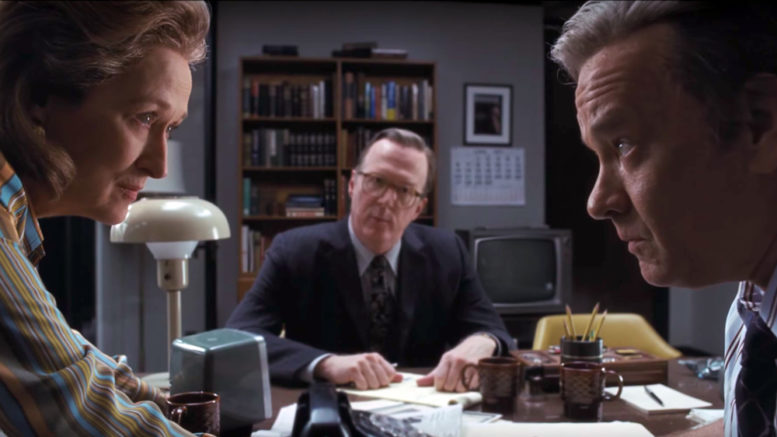Nominated for six Golden Globes, Steven Spielberg’s The Post was an award-show contender from the beginning. With its all-star cast, dramatic themes, and pastel-colored sets, the film hits every point of Oscar contention with ease.
The Post begins with an unnamed battle in 1960s Vietnam, the hectic nature of which is later mirrored in the newsrooms of both The Washington Post and The New York Times. The story follows Katherine “Kay” Graham (Meryl Streep), a Washington D.C. socialite who is thrown into the world of journalism after taking over as publisher and CEO of the Post, her family’s paper. At a time when women are largely seen as unfit for corporate work, Graham must make the decision about whether to publish classified government documents about the history of the Vietnam War, the Pentagon Papers, at the risk of massive legal repercussions and losing the company entirely.
The reserved and hesitant Graham is counterpointed by the explosive and passionate editor in chief of The Washington Post, Ben Bradlee (Tom Hanks). The chemistry between Streep and Hanks is flawless, as Hanks expresses Bradlee’s brashness in a hauntingly comparable way to Jason Robards in Alan Pakula’s All The President’s Men. Of course, Hanks’ loud and scene-stealing character attracts the viewer’s attention at first, but Streep’s uncharacteristic soft-spokenness is a welcome departure for her. The restraint she displays as Graham is just as captivating as Hanks’ outspokenness as Bradlee. This leaves the exchanges between the two the most thrilling scenes in the film.
The timeliness of this film is indisputable. Throughout the narrative, there are cutscenes to an ominously backlit President Nixon on the phone in the Oval Office, overlaid with real recordings of conversations with his anonymous associates which hint at the oncoming Watergate scandal. In addition, many parallels are drawn between the Nixon administration and the Trump administration, including Nixon declaiming the media in a strikingly similar fashion.
The Post is ultimately a reminder of the value of a free and unbiased press to the security and education of the American public. Spielberg manages to capture the nuances of the time period, including the rioting citizens and the rampantly corrupt government, in such a way that perfectly characterizes the era without taking away from the story. Recurring cutscenes flash phrases spelled on printing blocks, the running printing press, and the frantic loading of delivery trucks, setting the anxious tone of the film with elegant cinematography. In fact, to create these scenes, Spielberg visited the Post’s printing room and watched a paper being printed. The Post takes a concept that may not be thrilling ordinarily, and turns it into a cohesive story that keeps the viewer on the edge of their seat.

